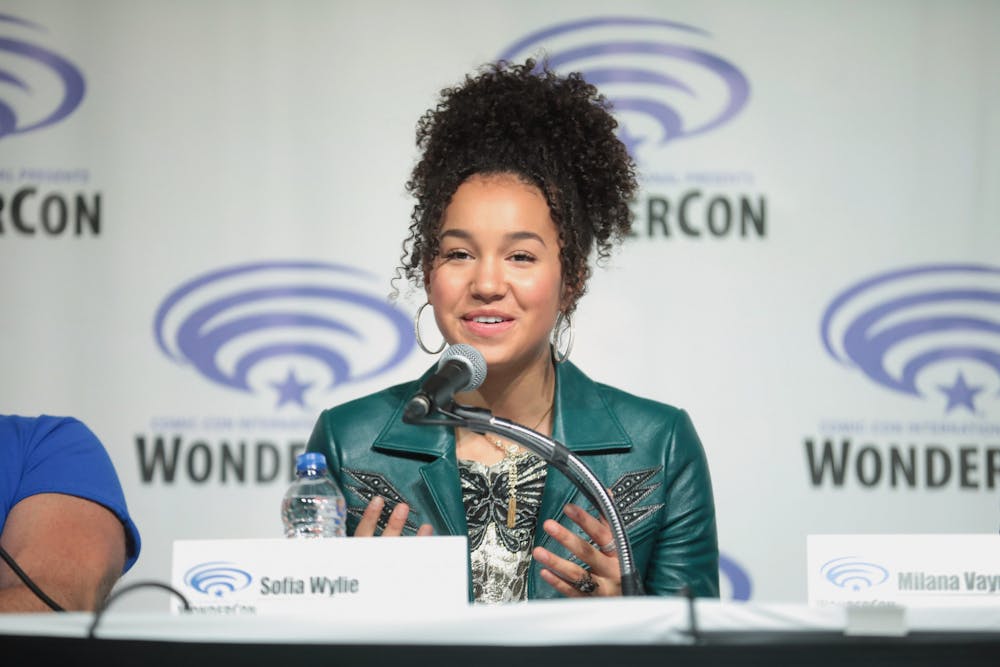To say I was excited for Netflix’s release of The School for Good and Evil on Oct. 19 is a huge understatement. It was beyond mere excitement. From a countdown starting months in advance to frantic replaying of the teaser trailer when it dropped, I was borderline obsessed.
The source material for the film, Soman Chainani’s book series by the same name, was one of my favorites growing up. When the film’s release was announced, I mentally and emotionally prepared myself for the nostalgia the film was sure to evoke. While I had been disappointed by previous film adaptations of my favorite childhood books (ahem, 2010 Percy Jackson & The Olympians: The Lightning Thief), I still waited with impatient anticipation for the film’s release.
The film and books center around Sophie (Sophia Anne Caruso) and Agatha (Sofia Wylie), two girls who are abducted from their village to attend the mysterious School for Good and Evil. While this plot sounds problematic, all is forgiven as we are swept up in the Hogwarts-esque institution responsible for training the heroes and villains featured in fairytale stories. Conflict arises when the line between good and evil becomes blurred.
As I waited for the film, I expected rich, visually appealing world-building, and the movie did not disappoint. The towers, the woods and the outfits were beautiful, and I was definitely jealous of a couple of Sophie’s dresses throughout the film. The film’s center on the distinction between good and evil was also visually apparent throughout the scenes, from shadowy gray and black colors painting the School for Evil to pastel pink and gold used for the School for Good.
I also loved how the film stayed true to the first novel, for the most part. With such rich subject material already laid out by Chainani, I was glad that the directors and producers did not take it upon themselves to change the plotline and story arc. The changes which were included in the film, such as Sophie’s penchant for dressmaking, only added to the development of the characters.
The acting, however, left a little to be desired. While I understood that Sophie and Agatha were kidnapped and placed in traumatic circumstances, the actors could be overly emotive. A definite line between earnestness and cringy shouting was crossed at several points in the film, especially in scenes where Agatha pleaded to be sent home.
Agatha was also just flat-out annoying. In the novel, her character is meant to be sullen and misanthropic, but only because she recognizes how little she fits in with other people and their surface-level judgments. In the film Agatha came across as self-righteous and snooty, which made her unlikable.
Another confusing point was the overall tone of the film. While it was, for the most part, a cheery family movie, there were random, almost disjointed darker scenes that felt a little too gory for the film. This is evident especially during a brutal stabbing scene and the graphic transformation of one of the characters into a giant, rotting bird.
I found myself wanting more as I watched the film. I wanted more details and more unspoken scenes and glances that developed the characters and their relationships. The relationship between Tedros (Jamie Flatters) and Agatha felt rushed and awkward, especially since it felt like we jumped from embarrassed flirting to impassioned declarations of love by the end of the film.
Tedros’ character also felt more like an archetype than a real person. This was, to some extent, purposeful, as he is meant to represent the stereotypical male prince of fairytale lore. He acted as a point of conflict between Sophie and Agatha and also emphasized the hidden and deceptive good and evil within their characters. However, I found myself wanting more from him beyond his chiseled exterior.
Overall, though, I really enjoyed this film. I have to admit that because of my love for Chainani’s novels, I was biased in favor of the movie, but with plenty of action, drama and creative wardrobe choices, there is a lot to like. With the ending of the film setting up a future sequel, I would recommend this movie to anyone who is a fan of Chainani’s novels and looking to revisit the world he created.





